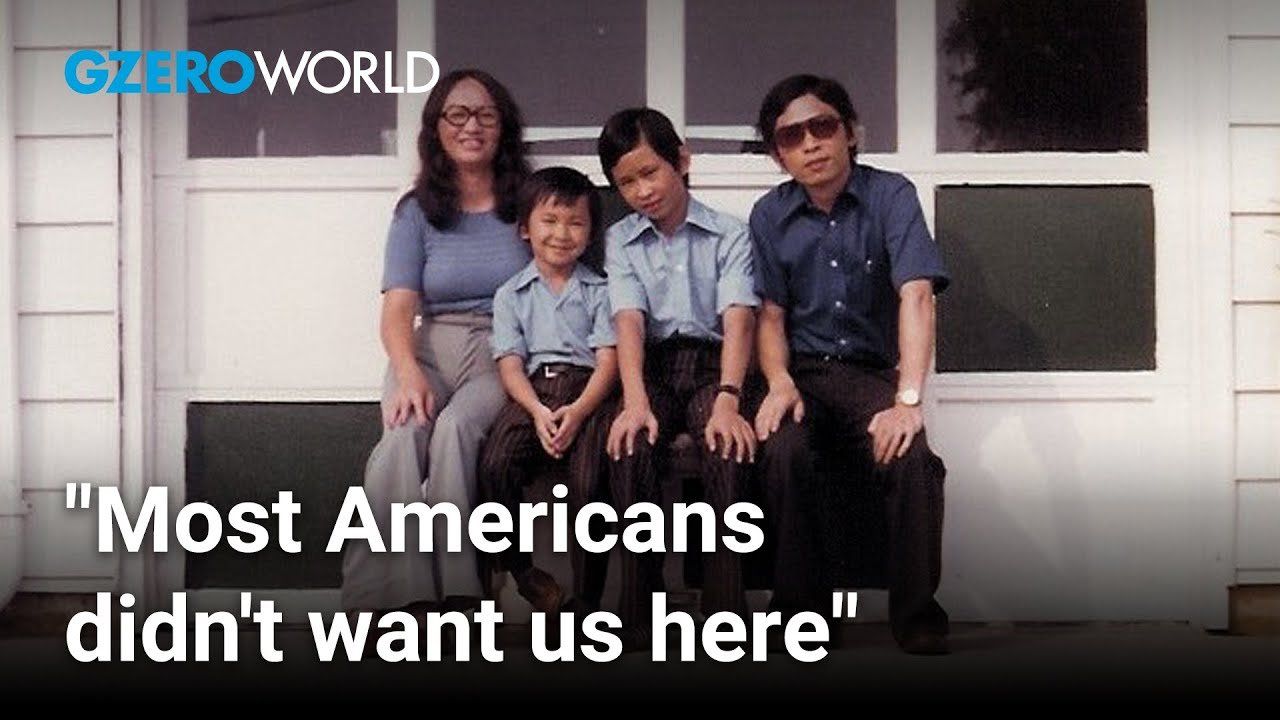April 29, 2025
On GZERO World with Ian Bremmer, Pulitzer Prize-winning author Viet Thanh Nguyen shares what it was like growing up as a Vietnamese refugee in the US—and how the Americans around him often misunderstood the emotional toll of displacement.
When Nguyen’s family fled Vietnam in 1975, they joined over 130,000 South Vietnamese refugees trying to rebuild their lives in the United States. Nguyen grew up in a tight-knit refugee community steeped in anti-communism and Catholicism, watching his parents work 14-hour days while sending money to relatives they had left behind. “We were a community that had lost so much,” he says, “and we were trying to rebuild our shattered lives.”
Nguyen, the author of the bestselling novel "The Sympathizer," tells Ian Bremmer that while Vietnamese refugees were navigating grief, separation, and survival, many Americans failed to grasp their reality. Shaped by war footage and one-dimensional portrayals, the public often viewed Southeast Asians as either victims or enemies. “There was a lot of misunderstanding... a lot of incomprehension,” he says—especially in parts of the country that had little exposure to Asian communities.
Watch full episode: 50 years after the Vietnam War
GZERO World with Ian Bremmer, the award-winning weekly global affairs series, airs nationwide on US public television stations (check local listings).
New digital episodes of GZERO World are released every Monday on YouTube. Don't miss an episode: subscribe to GZERO's YouTube channel and turn on notifications (🔔).GZERO World with Ian Bremmer airs on US public television weekly - check local listings.
More For You
Mastercard Economic Institute's Outlook 2026 explores the forces redefining global business. Tariffs, technology, and transformation define an adaptive economy for the year ahead. Expect moderate growth amid easing inflation, evolving fiscal policies, and rapid AI adoption, driving productivity. Digital transformation for SMEs and shifts in trade and consumer behavior will shape strategies worldwide. Stay ahead with insights to help navigate complexity and seize emerging opportunities. Learn more here.
Most Popular
Think you know what's going on around the world? Here's your chance to prove it.
President Donald Trump delivers an address to the nation from the Diplomatic Reception Room of the White House, in Washington, D.C., U.S. Wednesday, Dec. 17, 2025.
Doug Mills/Pool via REUTERS
Less than one day after US President Donald Trump declared a military blockade of sanctioned oil tankers from Venezuela, he addressed the nation during a rare primetime speech – but didn’t talk about Venezuela.
Indian Prime Minister Narendra Modi isn’t necessarily known as the greatest friend of Muslim people, yet his own government is now seeking to build bridges with Afghanistan’s Islamist leaders, the Taliban.
© 2025 GZERO Media. All Rights Reserved | A Eurasia Group media company.
